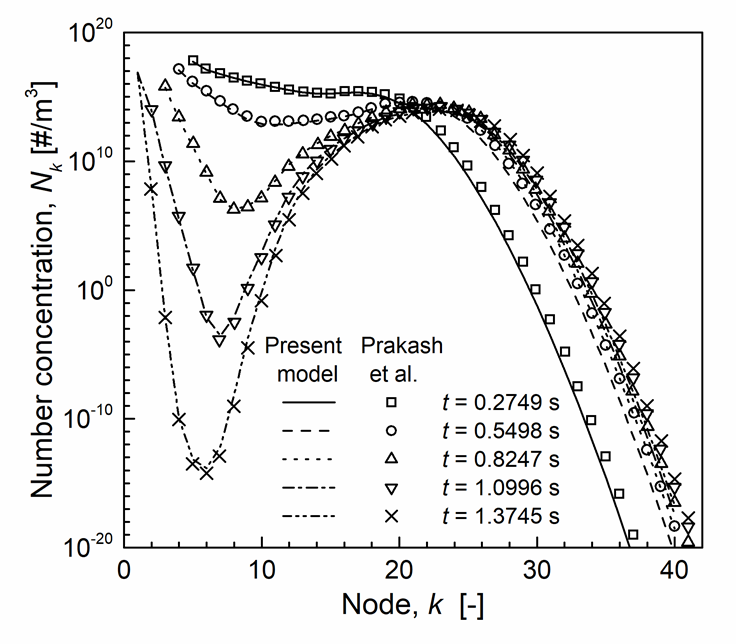1. Download and install OpenFOAM
Download and install OpenFOAM v9 by The OpenFOAM Foundation on Linux, macOS or Windows (note: these instructions have been validated for OpenFOAM v9, Ubuntu 18.04 LTS):It is recommended that any user of openAerosol should first develop some familiarity with OpenFOAM by working through tutorial cases:
2. Download openAerosol Code
In a terminal window, run the following command:git clone -b vOF9 git://git.code.sf.net/p/openaerosol/code openaerosol-code
cd openaerosol-code3. Compile openAerosol Code
Navigate to the source code and compile:cd aerosolGDEFoam/src/appSrc/aerosolGDEFoam/
wmake4. Run tutorial case
Navigate to a tutorial case and run it:cd ../../../run/aerosolGDEFoam/2.Nuc_Coag/
./createFiles
blockMesh./run5. Visualize results
To retrieve results for concentration vs node number for a given timestep such as t1 = 0.2749 s, first run a script in the folder of that given timestep. For example:cp dataMerge 0.2749/
cd 0.2749
./dataMerge
Details of the code and other example cases currently available may be found at the following links:
6. Modify your own solver and cases
Now that you understand what is under the hood, we encourage you to edit the solver or case files to your own application. We hope the openAerosol project enables new studies in aerosol science and new applications of aerosol technology.
We ask that you adequately reference the project and if you would like to contribute to openAerosol, please get in touch.